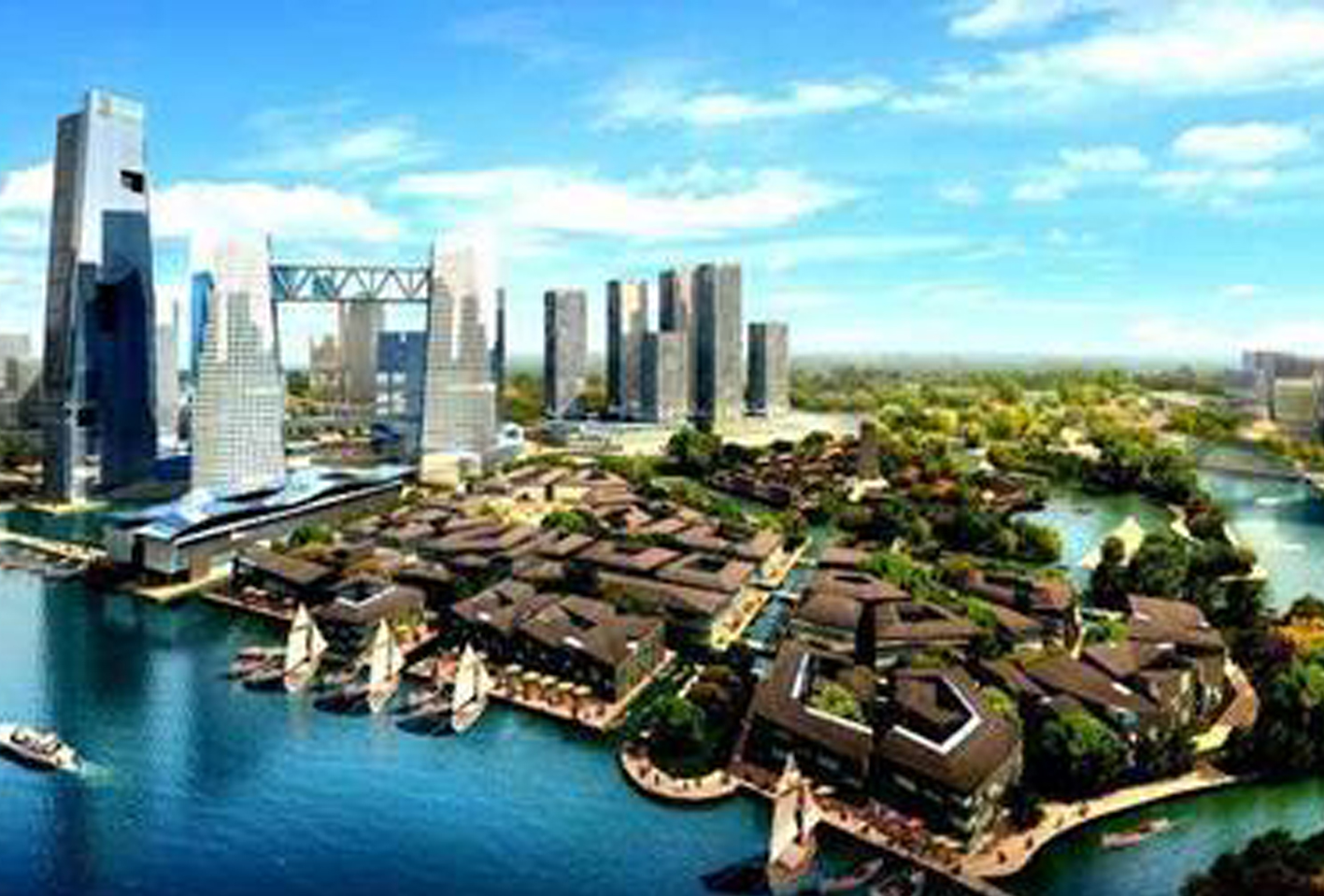City clusters resolve major urban contradictions

Tongzhou, a sub-center of Beijing, performs some of Beijing’s non-capital functions. Photo: FILE
Since the 21st century, city clusters have become prominent signals of the development of urbanization in developed countries. Up to now, China has designated 19 city clusters with 11 of them having been approved by the State Council as of February2019. Among them, the Beijing-Tianjin-Hebei region, the Yangtze River Delta and the Pearl River Delta have developed into the most influential areas of economic agglomeration nationwide and even in the Asia-Pacific region. Yet other city clusters are still under planning and formation. Given the current economic situation, the construction of city clusters should fully utilize the complementary function of each city within the city cluster and improve the total factor productivity through coordinated development within the cluster.
In a general sense, “city cluster” refers to a collection of cities around a core central city.
In the process of urbanization in past decades, big cities were often places where talent, funds and other economic elements gathered. The traditional main idea behind developing city clusters is to achieve interregional economic growth through the absorption of elements. However, from a spatial perspective, the problem behind this growth logic is that the economic and population carrying capacity of the region is ignored.
The construction of city clusters can guide big cities to transfer part of their function to surrounding cities. In this way, the urban diseases that develop in big cities can be prevented and the development of surrounding cities is fostered through strengthened economic relations. City clusters thus become a new approach for boosting the urban economy.
With the growing imbalance between small, medium-sized and big cities, urban economic development has exposed three major contradictions. First, small and medium-sized cities hope for “industrial transfer,” through which they come to attract high-quality industries and enterprises, so as to break out of their low-end status. But what big cities, especially metropolises and mega-cities, hope for is the “transfer of the industrial chain,” that is to transfer the non-essential links to other cities so as to realize industrial upgrading and the replacement of old growth drivers with new ones. This contradiction leads to a lack of coordinated cooperation and instead vicious competition between cities. The result is that some labor-intensive industries have been transferred to Southeast Asia.
The second major contradiction is that between economic growth and environmental protection. In the context of a lack of technology and capital, small and medium-sized cities find it difficult to achieve green reforms. On the contrary, they more easily become “asylums of pollution.” The third contradiction is the imbalance of talent, technology and capital flow. Especially in the small and medium-sized cities of Central and West China, the vicious circle of “factor outflow leads to weak industry, which leads to the further outflow of elements” easily occurs.
The construction of city clusters is conducive to resolving the above three major contradictions. Each city has its own factors and bases for development. Only by utilizing each city’s comparative advantage can the cities become interconnected and complementary with each other so as to develop the city cluster as a whole and maximize the total utility. Otherwise, vicious competition would occur with ineffective output and detrimental resource scrambling. This is also what supply-side structural reform involves. Taking city clusters as a new approach to developing regional economic development and construction is the embodiment of the basic laws of economics in the spatial dimension.
The construction of city clusters entails not only the promotion of the growth of total volume, but also emancipation and development of productive forces. Part of the industry or part of the industrial chain of the central city develops in the surrounding cities in a new form, which drives the economies of the surrounding cities while also relieving environmental and resource pressures in the central city.
Take Beijing as an example. Since 2014, Beijing has started to relegate its “non-capital” functions to surrounding areas. Over the past five years, the air quality of Beijing has seen perceptible improvement, and the industrial structure has been continuously optimized. Through the planning and construction of Tongzhou as the sub-center of Beijing and of Xiong’an as the area taking up its non-capital functions, the overall strategic spatial pattern of Beijing has been further enlarged.
As economic globalization enters a new stage, the development of city clusters should integrate more into the global innovation network and industrial chain and promote the total factor productivity of the cities in coordination. Mature city clusters such as the Yangtze River Delta, the Pearl River Delta and the Beijing-Tianjin-Hebei should aim at becoming world-class clusters and regional growth poles driving the economic revitalization of North China and the economic boom of South China.
Gao Tingfan and Deng Zhongqi are respectively from the Business School at Renmin University of China and the School of Economics at Sichuan University.
edited by BAI LE
